
by Rita Baker | Nov 21, 2017 | Innovation
A few months ago Mentors Montreal, an organisation I founded, was drafted to help provide and manage mentors for the Cooperathon; an open innovation competition organised by the Desjardins Group, in collaboration with Hacking Health and CIC.
 Desjardins is the largest association of credit unions in North America. Hacking Health organises hackathons in the health sector around the world and CIC is a financial services group under the umbrella of the French Crédit Mutuel Bank.
Desjardins is the largest association of credit unions in North America. Hacking Health organises hackathons in the health sector around the world and CIC is a financial services group under the umbrella of the French Crédit Mutuel Bank.
The competition is loosely based on the hackathon[1] model and lasts a full month. The goal is to bring everyday people, entrepreneurs, intrapreneurs, startups, organisations and companies of all sizes together to solve social challenges and hopefully create new, viable, companies and organisations rather than just software.
In my view, open innovation is one of the most useful growth tools in an organisation’s arsenal. Open innovation has come to mean different things to different people. Originally it was used specifically for technological innovations. The expression was applied mostly in large organisations and it basically meant having an external party contribute to the development of a new technology or furthering an existing one.
Today open innovation (sometimes referred to as collaborative innovation) is more a mindset than a specific concept.
It is also applied to all types of innovations, in all sectors, and not only technological ones. The only part of the original definition that still stands is that it requires collaboration between, at least, two distinct (ownership wise) entities.
How can open innovation help my organisation?
 Companies and organisations that do not practice some form of open innovation will most likely not prosper or even survive the next decade. This because scientific and technological progress is happening at such a fast pace (compared to recent history) that no single organisation can keep up on its own.[2]
Companies and organisations that do not practice some form of open innovation will most likely not prosper or even survive the next decade. This because scientific and technological progress is happening at such a fast pace (compared to recent history) that no single organisation can keep up on its own.[2]
How open innovation can benefit a startup
Collaborating with an established business or organisation of any size can help you:
- Find your product/market fit sooner
- Discover new markets
- Get access to expensive equipment/machinery/ resources/expertise faster
- Find the most efficient business model
- Grow your network/eco-system
- Grow at a faster pace
How open innovation can benefit companies and organisations
if you’re an established company or organisation, open innovation can help you:
- Get faster (and cheaper) access to new markets and/or hard to find expertise
- Witness and/or Integrate a new business model
- Understand and implement more efficient processes/equipment
- Accelerate the development of new products
How the Cooperathon does open innovation
 As mentioned, the Cooperathon brings startups, companies and organisations together to innovate. It has taken the hackathon concept and adapted it with the specific goal to create lasting companies or organisations that will have a significant positive impact on society.
As mentioned, the Cooperathon brings startups, companies and organisations together to innovate. It has taken the hackathon concept and adapted it with the specific goal to create lasting companies or organisations that will have a significant positive impact on society.
Desjardins Group (mostly their Desjardins Lab innovation team) and Hacking Health created the concept of the Cooperathon 3 years ago. Every year they evolve and grow it. The Cooperathon is thus a startup itself going through very similar stages as the more traditional startup. It would appear that 2017 was the year they found their product/market fit.
From a couple dozen teams, in Montreal, in 2015, the 2017 edition of Cooperathon brought together;
- over 600 participants in 3 cities (Montreal and Québec, in Canada and Lyon in France)
- 111 teams
- 135 mentors and experts from various entrepreneurial eco-systems
- 18 sponsors
- over 100 contributing partners (companies, organisations -public and NPO – and communities such as Mentors Montreal)
They invited other companies, organisations and governments to submit challenges and employees to coach/work with the teams, created during the Cooperathon, to solve these challenges.
The focus was on 4 different sectors; Health, Fintech, Smart City and Education.
During the course of the competition the teams are offered pertinent workshops on the newest entrepreneurial management methods (including Lean Startup type approaches) and access to experts and business mentors to help them create and start executing on their business model.
The financial cost to the participants is limited to the registration fee (ranges between 15 and 50CAD). The money collected from those fees is donated to a local charity. This year the Dr Julien Foundation was the recipient.
Desjardins has a coop, social-democratic culture and this reflects on the criteria used to evaluate the projects.
Sustainability, environmental awareness and positive social impact are as important as the financial viability of a project. This type of event serves to show that open innovation can also be used to better society as a whole and bring companies, large and small, onboard to work on social issues.
Total prizes exceeded 100 000 CAD divided in multiple categories. Individual cash prizes ranged from 5 000 to 12 500CAD.
Other prizes included admission to a Silicon Valley accelerator program (with flight and lodging) for the Startup track, as well as incubator program admission and workspace for the other tracks.
Social impact of the Cooperathon
 Such open innovation competitions serve multiple purposes.
Such open innovation competitions serve multiple purposes.
- They bring out of basements great initiatives and projects that may otherwise not see the light of day.
- They help train fledgling entrepreneurs and quickly expand their network.
- They increase, at an exponential rate, the cross-pollination and communication between various fields of study, business sectors, community organisations (public or private) and government.
- They help bring to light and solve (or at least attempt to) the most pressing social issues
- They allow large organisations, including governments, to better understand the local entrepreneurial eco-system and get their feet wet with open innovation
- They expose companies of all sizes to cutting edge innovation management techniques and expertise
- They strengthen the entrepreneurial and innovation eco-systems of their community
The Cooperathon, and other such open innovation initiatives, serve not only to accelerate innovation in a given society, they also help educate and empower entrepreneurs and intrapreneurs alike who want to make this world a better place.
My personal experience with the 2017 Cooperathon was amazing. I learnt so much and expanded my network at a record pace. I also got to meet an incredible amount of everyday people doing extraordinary deeds and surpassing themselves in a way they didn’t even know possible.
I strongly recommend you get involved in open innovation events in your community. I am certain it will make your life better as well.
[1] Hackathons are intensive events (usually held over a weekend) that gather various professionals to create a software application that will solve a specific problem.
[2] Hydra-type organisations such as Alphabet are doing a better job at innovating than traditional organisations because they mimic an entire eco-system that has incorporated open innovation in their business model.
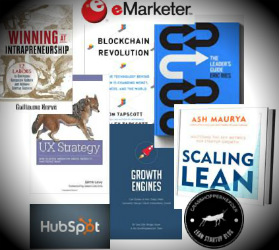
by Rita Baker | Dec 21, 2016 | Innovation, Lean Startup, Marketing
It’s the end of the year already. It went by incredibly fast. This is the time to look back and identify what needs to be fixed. It’s also the time to be grateful for all that we were able to achieve.
One of the things I am always very grateful for is the knowledge I gain during the year. Important sources for the knowledge I pick up are the books and articles I read.
I have to admit that I didn’t have as much time to read this year as I got involved in many (maybe too many) projects. I did however manage to read some very good books on marketing, innovation and Lean Startup.
As I did last year, I am sharing with you some of the ones I especially liked.
Best Reads on Marketing
I didn’t keep up with all that is new in marketing this year. It’s nearly impossible to do so. I tuned in to a few webinars that helped me focus my readings.
I read mostly on mobile marketing (various aspects), influencer as well as community marketing. Community marketing is a strategy that isn’t as easy to implement as one might think. Here is a post I wrote on how to find a profitable community marketing partner.
 Again this year, I found that my most interesting marketing reads came from blog posts on mainly two sites; eMarketer and HubSpot
Again this year, I found that my most interesting marketing reads came from blog posts on mainly two sites; eMarketer and HubSpot
 Speaking of HubSpot it is one of the case study in Sean Ellis’s book; Growth Engines: Case Studies of How today’s Most Successful Startups Unlock Extraordinary Growth.
Speaking of HubSpot it is one of the case study in Sean Ellis’s book; Growth Engines: Case Studies of How today’s Most Successful Startups Unlock Extraordinary Growth.
Through ten case studies, including Yelp, Uber, LinkedIn and HubSpot, Ellis explains the different types of growth engines and the contexts in which they worked best for those companies.
Although I read Growth Engines to better understand a concept that is integral to Lean Startup, this book offers some very valuable marketing lessons. It also touches on growth hacking, a term coined by Ellis. It inspired me to write a post on what growth hacking is and isn’t.
 Another book that I thoroughly enjoyed was UX Strategy by Jamie Levy. Having been a Product Manager at a time where UX was but one part of the job description, it was great to delve into the depths of UX strategy.
Another book that I thoroughly enjoyed was UX Strategy by Jamie Levy. Having been a Product Manager at a time where UX was but one part of the job description, it was great to delve into the depths of UX strategy.
Whether you are starting a new venture to create the killer app, or trying to innovate in an existing small, medium or large business, this book is a must read before you start. It can help you define a winning value proposition. It also guides yourr competitive analysis and helps you see which features you need to focus on.
The book is an easy read and doesn’t require any prior knowledge on UX design or app development.
Best Reads on Innovation
I was invited to a university workshop on blockchain earlier this year. Given I knew nothing on the topic I figured that it would be a great opportunity to learn. Montreal, where Baker Marketing is located, is a hotbed for blockchain research and development. The workshop did teach me the basics of blockchain but left me wanting to know more (a lot more, this is exciting stuff and definitely a game changer) about how this new technology could be used.
 One of the researcher at the workshop suggested Blockchain Revolution: How the Technology behind Bitcoin is Changing Money, Business and the World, by Don and Alex Tapscott. It was exactly what this non scientific reader needed. The Tapscotts explain the concept in very simple terms. They also explore a large number of applications for blockchain. They clearly show how significant a game changer this technology could be.
One of the researcher at the workshop suggested Blockchain Revolution: How the Technology behind Bitcoin is Changing Money, Business and the World, by Don and Alex Tapscott. It was exactly what this non scientific reader needed. The Tapscotts explain the concept in very simple terms. They also explore a large number of applications for blockchain. They clearly show how significant a game changer this technology could be.
In Spring I also contributed to the organisation of the Montreal edition of the Intrapreneurship Conference.
During the conference one of the keynote speakers was Guillaume Hervé. Hervé is a veteran practitioner of intrapreneurship. He contributed to several corporate spinoffs in the aeronautics and health sectors. In case you are not familiar with the term, intrapreneurship is entrepreneurship adapted to large enterprise.
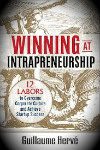 Intrapreneurship is however not the same as entrepreneurship. These differences are the focus of Hervé’s book Winning at Intrapreneurship: 12 Labors to Overcome Corporate Culture and Achieve Startup Success.
Intrapreneurship is however not the same as entrepreneurship. These differences are the focus of Hervé’s book Winning at Intrapreneurship: 12 Labors to Overcome Corporate Culture and Achieve Startup Success.
Based on the 12 labors of Hercules, Winning at Intrapreneurship looks at the traps, pitfalls and myths of innovating in large businesses. Hervé saw them all in his career as an intrapreneur. He shares with us some tricks of the trade on how to avoid and debunk them. You can read more on this topic on the post I wrote titled Entrepreneurs as Corporate Innovators.
Best reads on Lean Startup
 Continuing on the innovation in large business topic, Eric Ries published a second book this year. It’s titled the Leader’s Guide to Adopting Lean Startup at Scale.
Continuing on the innovation in large business topic, Eric Ries published a second book this year. It’s titled the Leader’s Guide to Adopting Lean Startup at Scale.
First, Eric innovated in the way he published the book. He financed the book with a Kickstarter campaign. The backers were invited to join the Leader’s Guide community (managed by Mightybell). He used the community to test hypotheses about the content and cover of his book. Yep, he did it the Lean Startup way.
Unfortunately however, Eric only printed as many books as there were backers who pledged the sufficient amount. It isn’t available anywhere for purchase now that the Kickstarter campaign is over. You can however get a free digital copy if you know someone who invested in the campaign.
The Leader’s Guide is based on Eric’s experience (as well as that of some backers) on implementing Lean Startup in large corporations, like GE, and government organisations (like the White House).
I especially like the format of the book. Symbols are used in the margins throughout the chapters in order to quickly understand what the text pertains to. The coach’s Guide sections, for example, are about tips and subtleties in implementing the concepts.
It’s truly a guide that you will go to when implementing a Lean Startup approach to a large organisation.
Eric also announced that he will be publishing a third book next year. It’s tentative title is The Startup Way.
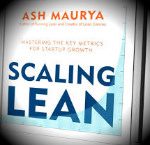 We were lucky to have another great Lean Startup practitioner write his second book this year. Ash Maurya penned Scaling Lean: Mastering the Key Metrics for Startup Growth.
We were lucky to have another great Lean Startup practitioner write his second book this year. Ash Maurya penned Scaling Lean: Mastering the Key Metrics for Startup Growth.
As a follow up to his first book, Running Lean, Ash is now looking at how to use metrics to scale your business once you have found the elusive product/market fit.
His rigorous approach to using key metrics to track your progress and focus your efforts has shown great results in many successful startups.
 Finally, I want to mention a website whose author consistently publishes great Lean Startup material. Tristan Kromer’s Grasshopper Herder is chalk full of Lean Startup ideas, tools and resources. Tristan was until recently one of the organisers of the San Francisco Lean Startup Circle.
Finally, I want to mention a website whose author consistently publishes great Lean Startup material. Tristan Kromer’s Grasshopper Herder is chalk full of Lean Startup ideas, tools and resources. Tristan was until recently one of the organisers of the San Francisco Lean Startup Circle.
If you are starting a new project and interested in putting Lean Startup into practice take a look at the series of posts on implementing Lean Startup. It is meant to guide you along your journey when you first start your project.
This concludes this year’s crop of my best reads on marketing, innovation and Lean Startup. Maybe some of them will become your favorites.
Thank you for taking the time to read Techno Marketing this year. I hope you take some time off during the holidays to rest and replenish, as we will.
Baker Marketing offers you its best wishes for the holidays. May 2017 be filled with health, serenity and lots of successful projects.


by Rita Baker | Jul 12, 2016 | Innovation
Large corporations are on a quest to innovate. In order to do so, they must develop and recruit corporate innovators. Their favorite target, when recruiting outside of the organisation, is the entrepreneur. The entrepreneur is after all the poster child of innovation.
I attended the Montreal Intrapreneurship Conference last month. A few of the speakers present were cautioning enterprises against employing entrepreneurs as corporate innovators.
Their warnings were based on personality traits studies. They were also based on case scenarios of entrepreneurs joining enterprises and not meeting expectations.
 Why are entrepreneurs not performing as corporate innovators?
Why are entrepreneurs not performing as corporate innovators?
I could not help but notice that both the speakers’ presentations and the various studies I read had one commonality. They both treated entrepreneurs and corporate innovators (intrapreneurs) as homogenous categories.
I have worked with a large number of entrepreneurs and corporate innovators, I have also been both in my career. Entrepreneurs are not all alike, just like corporate innovators are not all alike.
Most entrepreneurs will excel during a specific phase of their company lifecycle and need help (sometime a lot of help) during the other phases.
It is the same with corporate innovators. They are found in various roles in large corporations, most often according to the type of innovations they must generate. These various roles require significantly different profiles.
If you hire an entrepreneur with the wrong profile to fill the position, he/she will not meet your expectations.
 The types of entrepreneurs and corporate innovators
The types of entrepreneurs and corporate innovators
There are of course a myriad of variables that can be used to classify entrepreneurs and corporate innovators.
The ones I propose here are chosen in relations to the types of innovations that both entrepreneurs and corporate innovators need to create, as innovation is the common variable between the two groups.
The innovation output levels entrepreneurs need to reach will be highly correlated to the stage their company is at. The closer to the start of their company, the more intensely entrepreneurs need to innovate. This is not to say that entrepreneurs who manage mature companies will not need to innovate. They will simply not need to focus on the same types of innovations, or do so as intensely as when they began their venture.
Large corporations need corporate innovators in order to reach various objectives. These objectives can be categorized by the intensity of innovation required. If intensity of innovation can be classified on a spectrum that ranges from no innovation at all to highly disruptive innovation, it becomes easier to see where different types of entrepreneurs can fit on the innovation scale.
Although it is true that most entrepreneurs are more innovative than the general population, it is usually by necessity and not an innate trait. Depending on what lifecycle stage their company is at, that propensity to innovate and their approach will also vary.
 Evolution of the innovation reflex
Evolution of the innovation reflex
When I started my first business almost every day I had to innovate in a way that was new, at least to me. The process was roughly the same each time.
- I identified the problem and tried to understand it as much as I could (which was often not much given I had so little time)
- I generated ideas as to how to solve the problem (the creative part).
- I then implemented the idea that made the most sense (the work part)
- I failed a lot of the times (the building my resilience part)
- I adjusted my execution until I got it right or started over again with a new idea to solve my problem (the lots and lots more work part).
Starting over meant wasted time, which was costly. The faster my business grew, the costlier it got when I had to start over again. Also, since I had more people working with me, I had to teach them new ways of doing things whenever they would change. This also took time. Hence, unless an old way of doing things really didn’t work at all (which did occur regularly in a fast growth environment), I would stick to what I knew worked, even if something else could have worked better. I had no time to innovate. My overall mindset also shifted as my business started maturing. Not only was I not looking to innovate, I was trying to avoid it as it took time and resources and I wasn’t guaranteed a return on my investment.
More than ten years after I started my first business, I was recruited to work in a large enterprise to create, launch and manage new technological product lines for existing customer bases. By that time, I was very good at working within the confines of existing processes and structures. I was, however, still able to evaluate quickly when it was worth it to kill a process or structure and build new ones. These two skills proved to be some of the most valuable ones in my corporate job.
Had my job been to work at creating disruptive innovations in a corporate lab environment, it would have taken me a while to, not only reactivate and hone the skills I had during my startup phase, but to regain the necessary mindset for intense innovation.
Had I been hired to innovate on existing business processes and structures, I still would not have had the necessary patience and political skills to understand the entire situation before making changes.

The right fit
Hence, large corporations looking to fill innovation related position need to target the right types of entrepreneurs.
My personal experience and observations show that entrepreneurs who excel at the startup phase are a better fit to reach disruptive innovation goals in large corporations[1].
Entrepreneurs who excel at managing high growth phases are a better fit to reach objectives of incremental innovations (such as new product lines for existing markets or developing new markets for existing product lines).
Entrepreneurs who excel at managing mature companies seem a better fit to reach goals of structural or procedural innovations. These types of innovations require careful evaluation and patience. They are often perceived as incremental innovations.
As a corporate recruiter, you fist need to identify the intensity and types of innovations required in the position. Second, you need to find an entrepreneur who has already honed the skills and mindset required for the level and types of innovations required in the position.
My conclusions are based on years of practical experience and observations. They are however not based on scientific research. Hence, validating this hypothesis in scientific experiments may be of help to entrepreneurial programs, entrepreneurs considering a corporate career and large corporations in need of innovation.
[1] As long as the corporation creates a suitable environment which resembles the natural start-up environment.
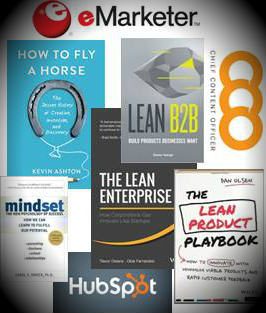
by Rita Baker | Dec 22, 2015 | Innovation, Lean Startup, Marketing
It is this time of the year. The time when we reflect on what we accomplished during last 12 months. What we did well and what we need to improve upon. It is also the time to consolidate our learnings for the year. One of the ways I circle back on my learnings for the year is to make a compilation of the books I read throughout the year and my best business reads list for the year.
I consider myself very lucky. My work requires me to not only keep up with what is going on in my field but keep ahead of the curve. Hence I need to read an average of probably 20-25 hours a week and I love it.
The one thing I noticed this year is that the marketing books I read were not my best sources of information to keep ahead of the marketing curve. Marketing is moving at the speed of light these days and the published book format is not well suited to keep you abreast of what is on and ahead of the curve. It is still however a great format to do a deep dive on a given topic.
Hence most of the marketing information I used to write my blog posts came from blogs or webzines. Therefore I will focus on my favorite cutting edge marketing information web sources for this year’s review.
As they are an inherent part of the services I offer to my customers I must also keep up on innovation and Lean Startup literature. I read many really great books on these two topics this year. It was hard to pick just a few for this review. Here are my best business reads for 2015.
Marketing
 Hubspot
Hubspot
This site is designed to draw in affiliates. Hence the information is tailored for marketing consultants. Hubspot picks up quickly on new trends and is therefore an excellent source of information to keep on top of the curve marketing-wise.
 eMarketer
eMarketer
eMarketer is a great source of market data. It also has some excellent white papers that draw a very clear picture of digital marketing, media and commerce. I especially like that they have extensive data on Canada and even some on Quebec.
 CCO Magazine
CCO Magazine
The articles in the Chief Content Officer magazine are dedicated to content marketing which is an ever inclusive field. The articles are often in-depth and of excellent quality.
Honorable mention goes to the Harvard Business Review (HBR). Although it isn’t specifically a marketing magazine, their marketing articles are truly well researched and written by some of the most brilliant American marketing minds.
Many of my blog posts, including 3 Digital Makreting Hurdles, Me Inc, Influencer marketing, retargeting, community marketing and co-marketing were all inspired and researched using at least one of these sources.
Innovation
 The very best book on innovation I read this year, hands down, is How to Fly a Horse by Kevin Ashton. Using examples of true disruptive innovations over the last century, Ashton explains not only the process of creating a disruptive innovation but its required environment as well. It inspired me to write an entire series of post on creativity and innovation, creativity stimuli, creativity killers and how to foster innovation in large corporations. The posts on this blog are in French but I translated the first one on Medium. The others will follow in the New Year.
The very best book on innovation I read this year, hands down, is How to Fly a Horse by Kevin Ashton. Using examples of true disruptive innovations over the last century, Ashton explains not only the process of creating a disruptive innovation but its required environment as well. It inspired me to write an entire series of post on creativity and innovation, creativity stimuli, creativity killers and how to foster innovation in large corporations. The posts on this blog are in French but I translated the first one on Medium. The others will follow in the New Year.
 Although not on innovation per se, Mindset: The new psychology of success written by psychologist Carol Dweck is a fantastic book that will help marketers, innovators and entrepreneurs foster an attitude that will, along with hard work, lead them to success. It was recommended to me by a colleague and I since recommended the book to a few friends and acquaintances. Most of them said it was one of, or the best, and most useful book they read in a long time.
Although not on innovation per se, Mindset: The new psychology of success written by psychologist Carol Dweck is a fantastic book that will help marketers, innovators and entrepreneurs foster an attitude that will, along with hard work, lead them to success. It was recommended to me by a colleague and I since recommended the book to a few friends and acquaintances. Most of them said it was one of, or the best, and most useful book they read in a long time.
Lean Startup
Dozens of Lean Startup related books covering topics from management, finance, marketing, corporate culture, analytics, product management and others came out in 2015. There were too many to read. Amazon’s list of Lean Startup related books to be published in 2016 makes me think that all the Lean Startup related books written in 2015 will only amount to a fraction of what is coming next year. Erie Ries himself (Lean Startup author) will be publishing a second book called The Leaders’ Guide, in 2016.
 I was even inspired myself this year to create some Lean Startup content. I shared with my readers the Marketing Minimum Viable Plan (Marketing MVP) in a series of 3 posts (part 1, part 2 and part 3).
I was even inspired myself this year to create some Lean Startup content. I shared with my readers the Marketing Minimum Viable Plan (Marketing MVP) in a series of 3 posts (part 1, part 2 and part 3).
Three of the books based on Lean Startup principles that stood out from the others for me were the following.
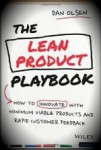 The Lean Product Playbook: How to innovate with Minimum Viable Products and Rapid Customer Feedback from Dan Olsen is one of them. It will help anyone developing a new product figure out how to apply Lean Startup principles and minimize commercialisation risks for their specific situation. It is well written and has loads of pertinent examples to facilitate comprehension of various concepts. It inspired me to write a post on product/market fit.
The Lean Product Playbook: How to innovate with Minimum Viable Products and Rapid Customer Feedback from Dan Olsen is one of them. It will help anyone developing a new product figure out how to apply Lean Startup principles and minimize commercialisation risks for their specific situation. It is well written and has loads of pertinent examples to facilitate comprehension of various concepts. It inspired me to write a post on product/market fit.
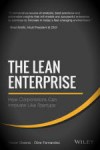 Lean Enterprise: How corporations can innovate like start-ups by Trevor Owen is another book that stood out. Based in large part on Christensen’s Innovator’s Dilemma, it clearly shows the barriers to innovation in large corporations. It also talks about the concept of innovation colonies and many of the practical aspects of setting up innovation friendly environments in large businesses.
Lean Enterprise: How corporations can innovate like start-ups by Trevor Owen is another book that stood out. Based in large part on Christensen’s Innovator’s Dilemma, it clearly shows the barriers to innovation in large corporations. It also talks about the concept of innovation colonies and many of the practical aspects of setting up innovation friendly environments in large businesses.
 Finally Lean B2B: Build Products Businesses Want by Etienne Garbugli is a comprehensive look at developing B2B products using Lean Startup principles. It takes a practical, hands-on approach which shows you step by step how Lean Startup product management is done in a B2B environment. It is the only book on Lean Startup I read that uses a layout and techniques one usually finds in textbooks to facilitate comprehension.
Finally Lean B2B: Build Products Businesses Want by Etienne Garbugli is a comprehensive look at developing B2B products using Lean Startup principles. It takes a practical, hands-on approach which shows you step by step how Lean Startup product management is done in a B2B environment. It is the only book on Lean Startup I read that uses a layout and techniques one usually finds in textbooks to facilitate comprehension.
This rounds up my list of best business reads for 2015.
Thank you for having taken the time to read the TechnoMarketing blog this year.
I would like to wish you and yours happy holidays and a healthy and fruitful 2016.

by Rita Baker | Sep 22, 2015 | Innovation
Suite aux trois billets précédents de Techno Marketing portant sur la créativité et l’innovation, les bonnes idées et les assassins de la créativité, je vous propose maintenant de mettre en œuvre 10 actions afin de favoriser l’innovation dans votre entreprise. Ces actions découlent du contenu des 3 précédents billets.
1 – Changez les idées
Carburez les cerveaux dans votre entreprise en prenant les actions suivantes:
- Créez une bibliothèque virtuelle
- Facilitez les abonnements aux bibliothèques en ligne et aux revues
- Encouragez les formations de pointes
- Invitez des conférenciers qui véhiculent de nouvelles idées
- Favorisez les groupes de discussions informels
Offrez des lieux de travail diversifiés
- Rendez disponibles des espaces de travail alternatifs où un employé peut changer d’environnement lorsqu’il/elle doit faire appel à sa créativité
- Facilitez la création d’équipes de travail instantanées en installant des tables hautes, par exemple, autour desquelles , des équipes peuvent se réunir debout
2 – Donnez du temps
L’innovation, comme on l’a vu, demande beaucoup d’efforts. Ces efforts prennent du temps, qui parfois se mesurent en années et non en mois. Les entreprises qui mettent en œuvre des programmes d’innovations, des incubateurs ou des colonies entrepreneuriales, où une partie du temps de travail peut être alloué à l’innovation, doivent donc être patientes avant de voir des résultats concrets.
3- Enseignez comment mesurer le progrès
 Il faut certes être patient pour voir des idées se transformer en innovation mais cela ne veut pas dire pour autant qu’il faut tolérer le piétinement. Afin que vous et votre équipe puissiez reconnaître le progrès (ou la stagnation) d’une idée, il est nécessaire d’identifier les données qui permettront de mesurer le progrès, connaître les méthodes pour recueillir ces données ainsi que savoir comment les interpréter. L’approche Lean Startup peut aider ici en offrant un cadre méthodologique ainsi que des idées d’outils qui permettent de mesurer le progrès d’une idée.
Il faut certes être patient pour voir des idées se transformer en innovation mais cela ne veut pas dire pour autant qu’il faut tolérer le piétinement. Afin que vous et votre équipe puissiez reconnaître le progrès (ou la stagnation) d’une idée, il est nécessaire d’identifier les données qui permettront de mesurer le progrès, connaître les méthodes pour recueillir ces données ainsi que savoir comment les interpréter. L’approche Lean Startup peut aider ici en offrant un cadre méthodologique ainsi que des idées d’outils qui permettent de mesurer le progrès d’une idée.
4 – Exigez des comptes
L’innovation demande de gros efforts sur de longues périodes. Il est tout à fait normal qu’un essoufflement et/ou une baisse de motivation survienne en cours de route. C’est pourquoi un suivi régulier des projets, sans être harcelant bien sûr, est bénéfique. Lorsqu’un projet stagne, des ressources additionnelles peuvent alors être mises à la disposition des individus ou équipes, afin de les aider à surmonter un obstacle. Lors des rencontres d’évaluation l’individu, ou l’équipe, devrait aussi présenter les objectifs que le projet doit atteindre pour la prochaine période d’évaluation.
5 – Limitez les règles au minimum
La conformité, nous l’avons vu, est l’un des plus mortel assassin de la créativité. Les milieux où pullulent les règles, code de ci ou de cela, obligent un taux de conformité plus élevé. Il est préférable, afin de ne pas nuire à l’innovation, d’émettre des cadres réglementaires plutôt qu’une série de règles. Encore là, mieux vaut les garder au minimum. Assurez-vous que les raisons d’être et les objectifs du cadre sont compris et acceptés de tous. Gérez les exceptions lorsqu’elles se présenteront.
6 – Encouragez les erreurs
 Vous avez bien lu. Je vous suggère d’encourager les erreurs. Je fais référence ici au type d’erreurs nécessaire à l’innovation. Celles où une action est prise sans que toutes les informations soient connues au préalable et qui ne donne aucun résultat probant. Ce type d’erreur génère non seulement l’apprentissage mais permet également à une mauvaise idée de progresser vers une bonne idée génératrice d’innovation.
Vous avez bien lu. Je vous suggère d’encourager les erreurs. Je fais référence ici au type d’erreurs nécessaire à l’innovation. Celles où une action est prise sans que toutes les informations soient connues au préalable et qui ne donne aucun résultat probant. Ce type d’erreur génère non seulement l’apprentissage mais permet également à une mauvaise idée de progresser vers une bonne idée génératrice d’innovation.
7 – Enseignez la critique utile
Si la critique inutile, celle qui n’est pas basée sur des données vérifiables, tue la créativité, la critique utile, basée sur des faits, permet d’apprendre et de faire avancer une idée plus rapidement. Il est donc important que tous concernés sachent différencier une bonne d’une mauvaise critique. Cette connaissance permet aux innovateurs non seulement de protéger leur créativité, en ignorant les critiques inutiles, mais elle favorise également la critique utile.
8- Favorisez l’action
Seule l’action génère l’innovation. La réflexion et la discussion contribuent à la créativité mais en trop grande quantité, elles handicapent l’innovation. Il est donc important que l’environnent de travail élève l’action au-dessus de la discussion. Pour ce faire:
- Encouragez vos employés à prouver empiriquement la supériorité d’une idée lorsque confrontée à une autre en facilitant des mini-tests de marché ou en encourageant la fabrication de prototypes.
- Facilitez l’accès à des laboratoires physiques et virtuels dotés d’outils et de ressources permettant la création de prototypes, projets pilotes et/ou de tester rapidement certaines idées.
9 – Encouragez les contacts clients
 Un grand nombre d’entreprises limitent l’accès client au personnel des ventes, de soutient ou de services. Il s’agit d’une grave erreur si vous désirez favoriser l’innovation (et bien répondre aux besoins de vos clients). Toute personne qui a une idée novatrice pour mieux répondre aux besoins de votre clientèle, devrait avoir comme premier réflexe d’aller la valider auprès des clients. Si cette idée vous fait frémir, à titre de gestionnaire, il faudrait sérieusement vous pencher sur les raisons et prendre action afin de rectifier la situation. En cette ère où les médias sociaux sont omniprésents, chaque employé, peut importe son rôle dans l’entreprise, peut se transformer instantanément en porte-parole de votre organisation.
Un grand nombre d’entreprises limitent l’accès client au personnel des ventes, de soutient ou de services. Il s’agit d’une grave erreur si vous désirez favoriser l’innovation (et bien répondre aux besoins de vos clients). Toute personne qui a une idée novatrice pour mieux répondre aux besoins de votre clientèle, devrait avoir comme premier réflexe d’aller la valider auprès des clients. Si cette idée vous fait frémir, à titre de gestionnaire, il faudrait sérieusement vous pencher sur les raisons et prendre action afin de rectifier la situation. En cette ère où les médias sociaux sont omniprésents, chaque employé, peut importe son rôle dans l’entreprise, peut se transformer instantanément en porte-parole de votre organisation.
10- Hissez vos champions sur un podium
Finalement, mettez en place des mesures qui permettent non seulement d’identifier vos champions de l’innovation, mais également de les reconnaître. Cela aura pour effet de:
- Motiver vos innovateurs à récidiver
- Émettre un message clair que l’innovation est désirée
- Rendre les champions plus accessibles à ceux qui ont de bonnes idées mais pas le tempérament ou la motivation pour les transformer en innovations.
Voici qui complète cette liste d’astuces ainsi que cette série sur la créativité et l’innovation. Je vous invite, si ce n’est déjà fait, à lire les trois billets précédents sur la créativité et l’innovation, les bonnes idées et les assassins de la créativité. Ajoutez à ces astuces vos propres idées sur comment encourager la créativité et l’innovation dans votre entreprise.

by Rita Baker | Sep 15, 2015 | Innovation
Lors de précédents billets nous avons vu que l’innovation, qui nait de la créativité, requiert un travail acharné. Nous avons également regardé les éléments qui favorisent la génération de bonnes idées.
Qu’en est-il des facteurs qui inhibent la créativité et, de ce fait, l’innovation? Il est tout aussi important de les identifier afin de les éviter ou, du moins, de se défendre pour minimiser leurs impacts.
La conformité
Vous vous souvenez de cette expérience où les participants étaient des enfants, des étudiants en gestion et des avocats? Ceux-ci devaient construire une tour avec une guimauve et des spaghettis en moins de 8 minutes. Le facteur sous-jacent qui explique les résultats obtenus (les enfants ont battu les étudiants à plate couture, qui ont eux-mêmes mieux fait que les avocats) est le niveau de conformité sociale auquel doivent se soumettre les participants. Plus le niveau est élevé, plus l’individu, lorsqu’il se retrouve en situation sociale, doit faire d’efforts, via l’observation et la discussion afin de saisir et composer avec les règles non dites. Il doit également se positionner dans la hiérarchie du groupe et préserver son image sociale.
Dans les cas où l’individu baigne au quotidien dans un environnement où les règles explicites et implicites abondent, cela en vient qu’à modeler sa façon de penser également. Même si vous n’êtes pas avocat, en tant qu’adulte vivant en société, vous devez vous conformer aux normes sociales pour survivre et évoluer. Cela implique-t-il que nous devons bannir la conformité afin d’être créatif? Bien sûr que non. Comme vous, je préfère sérieusement que les gens autour de moi se conforment au code de la route et soient ponctuels lorsque je les rencontre.
Alors comment maximiser notre créativité? Dans un premier temps il faut prendre conscience des règles non dites que nous suivons. Il faut ensuite en faire l’abstraction (ceci demande un gros effort) lorsque nous sollicitons notre créativité.
Une astuce pour y parvenir est de se mettre physiquement dans une situation inhabituelle. Soit en choisissant un lieu de travail inconnu, en adoptant une position physique différente, en utilisant un outil de travail différent et en variant les stimuli sensoriels (tactiles, olfactifs, visuels, sonores).
Une autre façon, si vous y parvenez, est de se mettre dans la peau d’un personnage qui diffère significativement de vous et d’adresser le problème selon sa perspective. C’est le temps de pratiquer vos talents d’acteurs.
La confiance et la créativité
Selon les mots de Kevin Ashton, auteur de How to Fly a Horse,
La confiance en soi est la croyance en nous-mêmes
La certitude est la croyance en nos idées
La confiance en soi est un pont alors que la certitude est une barricade.
La certitude nous empêche d’explorer de nouvelles idées tout autant que le manque de confiance en soi.
Nous sommes parfois tellement convaincus de nos idées que nous oublions de nous assurer qu’elles sont fondées sur des faits empiriques plutôt que sur des impressions, des rumeurs ou de fausses informations. Notre certitude nous ferme alors à de nouvelles idées.
Une astuce pour éviter ce piège est d’abord d’identifier les hypothèses sur lesquelles nos idées sont basées. Ensuite, demander à une autre personne (pour éviter votre propre biais perceptif) de conduire une courte expérience auprès de tierces parties qui vous permettra de confirmer (ou d’infirmer) votre hypothèse. Souvent, l’expérience peut se limiter à poser une ou deux questions à quelques personnes si leurs réponses sont polarisées.
Lorsqu’on veut valider une hypothèse, dans le cadre d’un processus créatif (et non pas scientifique), nul besoin de preuves statistiquement significatives. On ne recherche ici qu’une direction.
Le jugement des autres
Personnellement, le jugement des autres a longtemps été le plus grand frein à ma créativité en milieu professionnel. Ce jusqu’à ce que j’arrive à distinguer entre la critique nocive, celle basée sur tout sauf des faits et données empiriques, et la critique utile. Non pas celle qui offre une solution mais celle appuyée sur des faits et données empiriques.
Afin de maximiser votre créativité, apprenez à faire la sourde oreille à la critique nocive, ou encore mieux, à vous tenir loin des gens qui les émettent en grand nombre.
N’oubliez pas, par contre, de garder l’oreille et l’esprit ouverts pour les critiques utiles qui pourront améliorer la qualité de vos idées.
Corollairement, apprenez à éviter d’émettre des critiques basées sur des opinions et non des faits empiriques.
La familiarité et la routine
 Lorsque nous regardons une image, une scène, une problématique à répétition, nous n’arrivons plus à en voir certains détails. Surtout si ces détails ne correspondent pas aux schèmes de référence que nous entretenons.
Lorsque nous regardons une image, une scène, une problématique à répétition, nous n’arrivons plus à en voir certains détails. Surtout si ces détails ne correspondent pas aux schèmes de référence que nous entretenons.
How to Fly a Horse raconte l’histoire de Robin Warren, un chercheur australien, qui a découvert la bactérie h. pylori, responsable d’ulcères et autres problèmes gastro-intestinaux, en 1984. Cette bactérie, qui réside entre autre dans l’estomac, avait été sous l’œil de milliers de chercheurs au cours de décennies précédentes. La croyance, jusqu’alors, que l’estomac étant un environnement stérile, aucun des autres chercheurs n’a remarqué cette bactérie, en forme de croissant de lune, pourtant bien évidente sous le microscope.
Cette découverte a rapporté un prix Nobel à Warren et a permis de réduire la souffrance de dizaines de milliers de gens à ce jour.
Regarder une image, une scène ou une problématique familière sous un jour nouveau en mettant nos croyances de côté n’est pas une mince tâche.
Une astuce pour vous aider à accomplir ceci est de demander à des personnes, très différentes de vous, de vous décrire ce qu’ils voient lorsqu’ils regardent une image, scène ou problématique qui vous est familière. N’hésitez pas à leur poser des questions sur leur processus d’observation. Répétez l’expérience de nombreuses fois. Regarder ensuite une nouvelle image, scène ou problématique différente, qui vous est familière, peu de temps après votre expérience. Vous augmenterez les probabilités de voir de nouveaux éléments apparaître.
Le prochain et dernier billet de cette série se penchera sur les environnements d’entreprises qui tuent la créativité et limitent l’innovation ainsi que les actions que peuvent poser les gestionnaires pour les atténuer.

 Desjardins is the largest association of credit unions in North America. Hacking Health organises hackathons in the health sector around the world and CIC is a financial services group under the umbrella of the French Crédit Mutuel Bank.
Desjardins is the largest association of credit unions in North America. Hacking Health organises hackathons in the health sector around the world and CIC is a financial services group under the umbrella of the French Crédit Mutuel Bank. Companies and organisations that do not practice some form of open innovation will most likely not prosper or even survive the next decade. This because scientific and technological progress is happening at such a fast pace (compared to recent history) that no single organisation can keep up on its own.[2]
Companies and organisations that do not practice some form of open innovation will most likely not prosper or even survive the next decade. This because scientific and technological progress is happening at such a fast pace (compared to recent history) that no single organisation can keep up on its own.[2] As mentioned, the Cooperathon brings startups, companies and organisations together to innovate. It has taken the hackathon concept and adapted it with the specific goal to create lasting companies or organisations that will have a significant positive impact on society.
As mentioned, the Cooperathon brings startups, companies and organisations together to innovate. It has taken the hackathon concept and adapted it with the specific goal to create lasting companies or organisations that will have a significant positive impact on society. Such open innovation competitions serve multiple purposes.
Such open innovation competitions serve multiple purposes.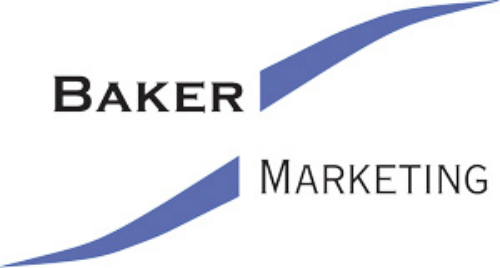

 Again this year, I found that my most interesting marketing reads came from blog posts on mainly two sites; eMarketer and HubSpot
Again this year, I found that my most interesting marketing reads came from blog posts on mainly two sites; eMarketer and HubSpot Speaking of HubSpot it is one of the case study in Sean Ellis’s book;
Speaking of HubSpot it is one of the case study in Sean Ellis’s book;  Another book that I thoroughly enjoyed was
Another book that I thoroughly enjoyed was  One of the researcher at the workshop suggested
One of the researcher at the workshop suggested  Intrapreneurship is however not the same as entrepreneurship. These differences are the focus of Hervé’s book
Intrapreneurship is however not the same as entrepreneurship. These differences are the focus of Hervé’s book  Continuing on the innovation in large business topic, Eric Ries published a second book this year. It’s titled the Leader’s Guide to Adopting Lean Startup at Scale.
Continuing on the innovation in large business topic, Eric Ries published a second book this year. It’s titled the Leader’s Guide to Adopting Lean Startup at Scale. We were lucky to have another great Lean Startup practitioner write his second book this year. Ash Maurya penned
We were lucky to have another great Lean Startup practitioner write his second book this year. Ash Maurya penned  Finally, I want to mention a website whose author consistently publishes great Lean Startup material. Tristan Kromer’s
Finally, I want to mention a website whose author consistently publishes great Lean Startup material. Tristan Kromer’s 

 Why are entrepreneurs not performing as corporate innovators?
Why are entrepreneurs not performing as corporate innovators? The types of entrepreneurs and corporate innovators
The types of entrepreneurs and corporate innovators Evolution of the innovation reflex
Evolution of the innovation reflex

 Hubspot
Hubspot CCO Magazine
CCO Magazine The very best book on innovation I read this year, hands down, is How to Fly a Horse by Kevin Ashton. Using examples of true disruptive innovations over the last century, Ashton explains not only the process of creating a disruptive innovation but its required environment as well. It inspired me to write an entire series of post on
The very best book on innovation I read this year, hands down, is How to Fly a Horse by Kevin Ashton. Using examples of true disruptive innovations over the last century, Ashton explains not only the process of creating a disruptive innovation but its required environment as well. It inspired me to write an entire series of post on  Although not on innovation per se, Mindset: The new psychology of success written by psychologist Carol Dweck is a fantastic book that will help marketers, innovators and entrepreneurs foster an attitude that will, along with hard work, lead them to success. It was recommended to me by a colleague and I since recommended the book to a few friends and acquaintances. Most of them said it was one of, or the best, and most useful book they read in a long time.
Although not on innovation per se, Mindset: The new psychology of success written by psychologist Carol Dweck is a fantastic book that will help marketers, innovators and entrepreneurs foster an attitude that will, along with hard work, lead them to success. It was recommended to me by a colleague and I since recommended the book to a few friends and acquaintances. Most of them said it was one of, or the best, and most useful book they read in a long time. I was even inspired myself this year to create some Lean Startup content. I shared with my readers the
I was even inspired myself this year to create some Lean Startup content. I shared with my readers the  The Lean Product Playbook: How to innovate with Minimum Viable Products and Rapid Customer Feedback from Dan Olsen is one of them. It will help anyone developing a new product figure out how to apply Lean Startup principles and minimize commercialisation risks for their specific situation. It is well written and has loads of pertinent examples to facilitate comprehension of various concepts. It inspired me to write a
The Lean Product Playbook: How to innovate with Minimum Viable Products and Rapid Customer Feedback from Dan Olsen is one of them. It will help anyone developing a new product figure out how to apply Lean Startup principles and minimize commercialisation risks for their specific situation. It is well written and has loads of pertinent examples to facilitate comprehension of various concepts. It inspired me to write a Lean Enterprise: How corporations can innovate like start-ups by Trevor Owen is another book that stood out. Based in large part on Christensen’s Innovator’s Dilemma, it clearly shows the barriers to innovation in large corporations. It also talks about the concept of innovation colonies and many of the practical aspects of setting up innovation friendly environments in large businesses.
Lean Enterprise: How corporations can innovate like start-ups by Trevor Owen is another book that stood out. Based in large part on Christensen’s Innovator’s Dilemma, it clearly shows the barriers to innovation in large corporations. It also talks about the concept of innovation colonies and many of the practical aspects of setting up innovation friendly environments in large businesses. Finally Lean B2B: Build Products Businesses Want by Etienne Garbugli is a comprehensive look at developing B2B products using Lean Startup principles. It takes a practical, hands-on approach which shows you step by step how Lean Startup product management is done in a B2B environment. It is the only book on Lean Startup I read that uses a layout and techniques one usually finds in textbooks to facilitate comprehension.
Finally Lean B2B: Build Products Businesses Want by Etienne Garbugli is a comprehensive look at developing B2B products using Lean Startup principles. It takes a practical, hands-on approach which shows you step by step how Lean Startup product management is done in a B2B environment. It is the only book on Lean Startup I read that uses a layout and techniques one usually finds in textbooks to facilitate comprehension.




